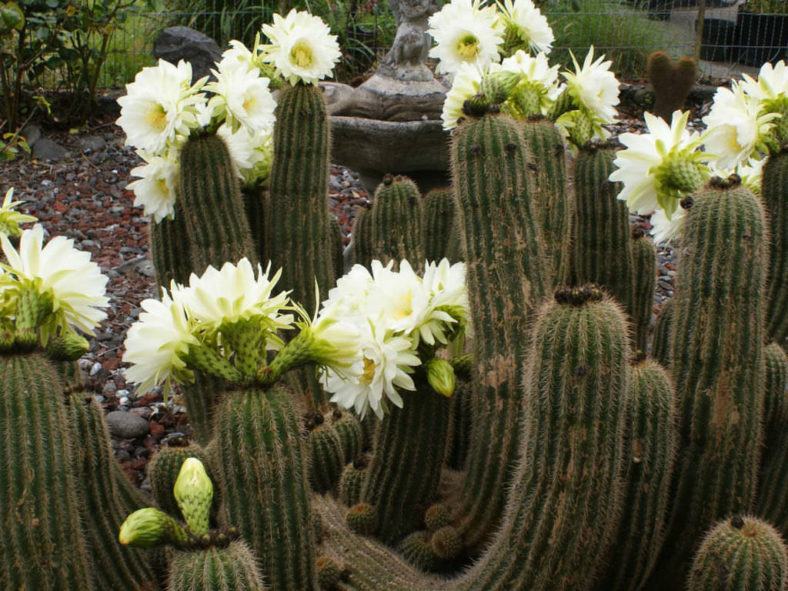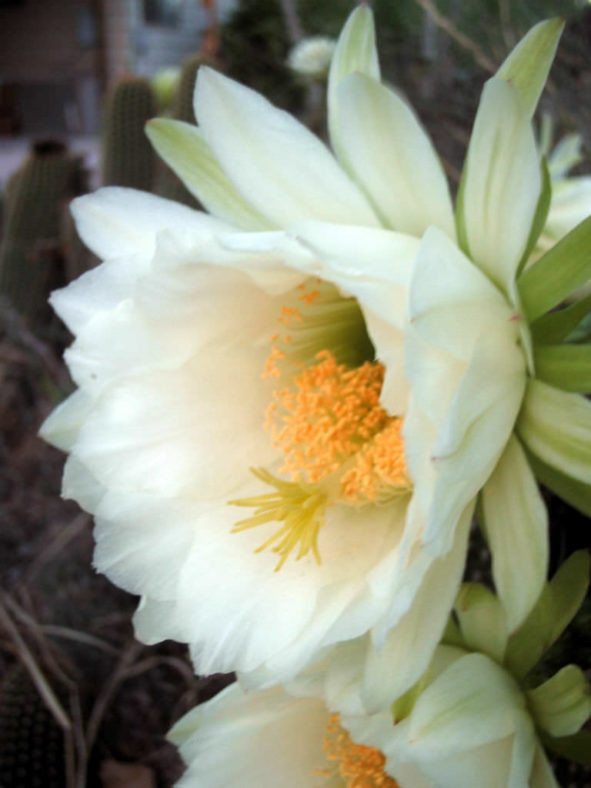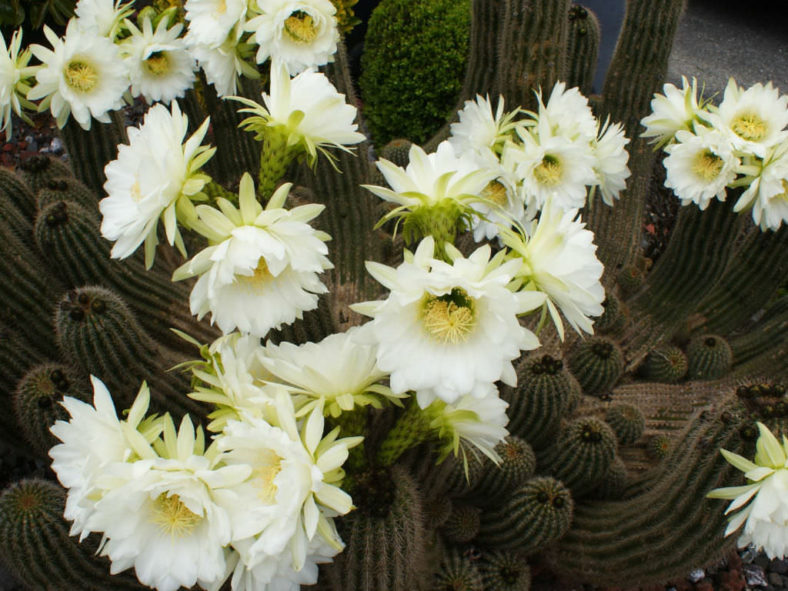Scientific Name
Echinopsis schickendantzii F.A.C.Weber
Synonym(s)
Cereus schickendantzii, Soehrensia schickendantzii, Trichocereus schickendantzii
Scientific Classification
Family: Cactaceae
Subfamily: Cactoideae
Tribe: Trichocereeae
Genus: Echinopsis
Origin
Echinopsis schickendantzii is native to northwestern Argentina and Bolivia. It grows in high-altitude grasslands from 3,940 to 10,500 feet (1,200 to 3,200 m) above sea level.
Description
Echinopsis schickendantzii, also known as Trichocereus schickendantzii or Soehrensia schickendantzii, is a shrubby cactus with green columnar stems that have 10 to 15 ribs lined with wooly areoles bearing clusters of yellowish spines. The cylindrical stems can grow up to 6.6 feet (2 m) tall and 4 inches (10 cm) in diameter. Each areole bears 2 to 8, usually 4, central spines and at first 9, later more radial spines. They are straight and can measure up to 0.4 inches (1 cm) long.
The flowers are white and funnel-shaped, with the floral tube covered with long dark hairs and can reach up to a length of 8 inches (20 cm). They appear near the top of the stems from spring to early summer and last several days. The fruits are green, globose, edible, and remain clothed with the long dark hairs of the floral tube. They can grow about 2 inches (5 cm) long.

Hardiness
USDA hardiness zones 10a to 11b: from 30 °F (−1.1 °C) to 50 °F (+10 °C).
How to Grow and Care
If you can grow cacti and succulents successfully, you can likely grow the Echinopsis species without much trouble. Like many cacti, they prefer a drying period between waterings, even when slightly wilt. When you water, however, you should water deeply. The plant will noticeably plump up. The cactus mustn't be exposed to prolonged dampness and sitting water. Never let your cactus sit in a dish of water. Lastly, fertilize during the growing season for the best results.
Echinopsis can be easily propagated from offsets that cluster around the mother plant's base. Cut offsets close to the stem, at the narrowest possible place. When rooting cacti from cuttings, let the fresh cutting dry out slightly on a paper towel and cut the cacti at the narrowest place possible. After a few days to a few weeks, depending on the size of the cut surface, the cut surface should have dried out and formed a callous or slightly rough opening. Once the callous has formed, place the cutting in a rooting mixture of fast-draining cacti soil.
See more at How to Grow and Care for Echinopsis.
Links
- Back to genus Echinopsis
- Succupedia: Browse succulents by Scientific Name, Common Name, Genus, Family, USDA Hardiness Zone, Origin, or cacti by Genus
Photo Gallery
Click on a photo to see a larger version.


